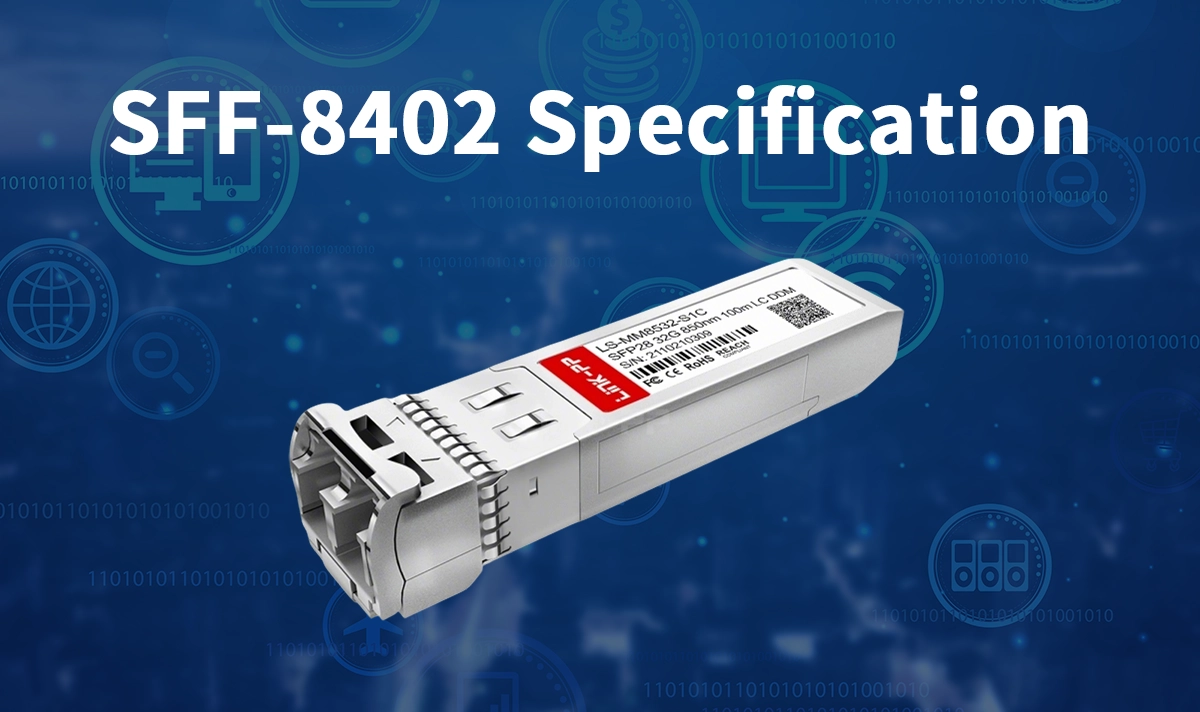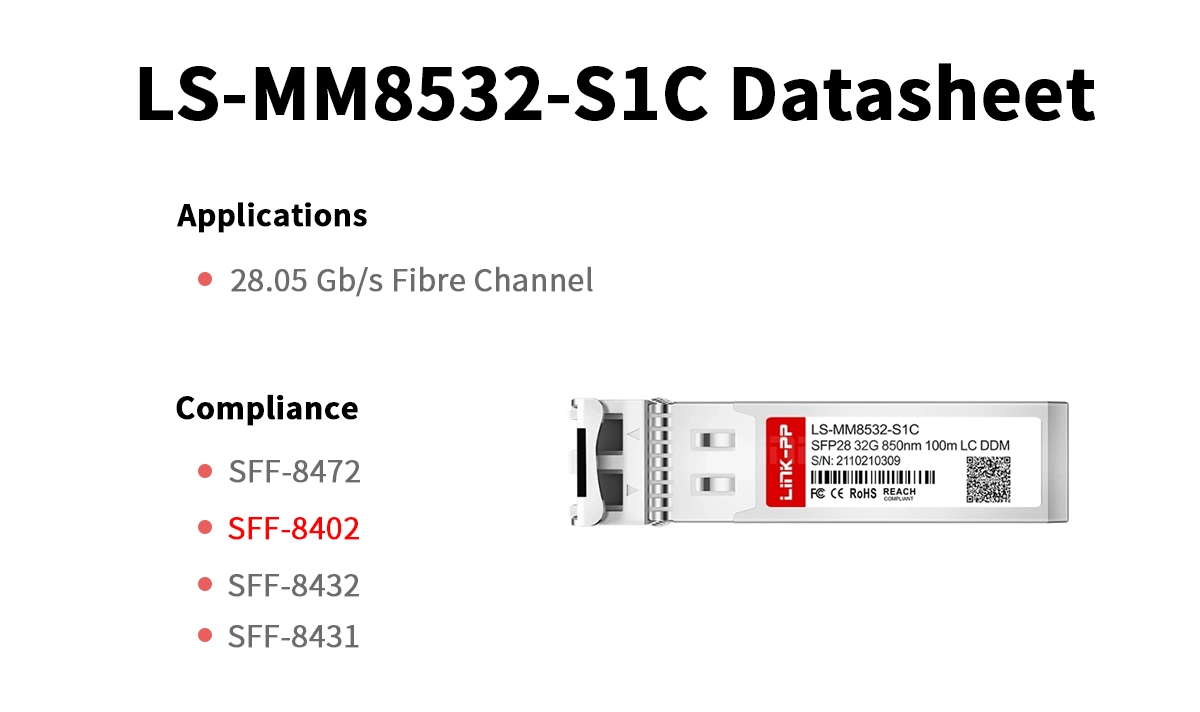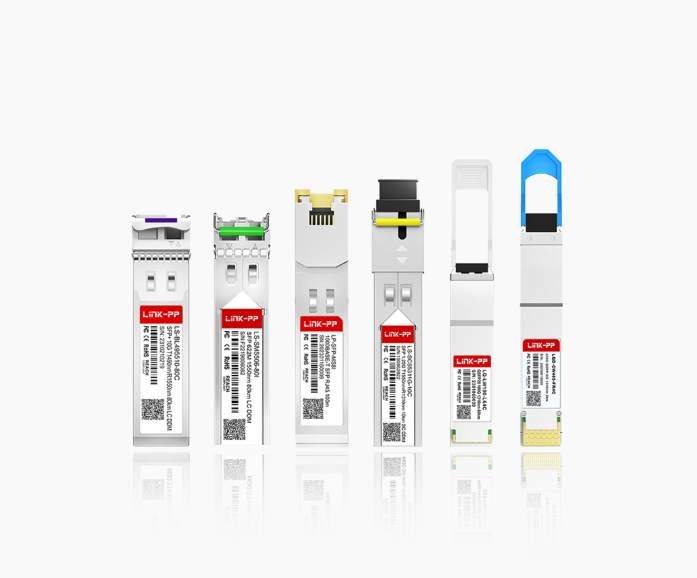
● Introduction
In modern data centers and telecom networks, the demand for higher bandwidth and efficient connectivity drives the transition from 10 Gb/s to 25 Gb/s and beyond. To ensure interoperability and reliable system integration, the SFF-8402 Specification defines the standard mechanical and electrical interface for SFP28 transceivers—single-lane modules designed for up to 28 Gb/s transmission.
The SFF-8402 standard was developed under the Small Form Factor Committee (SFF) to provide manufacturers and network designers with unified design rules for module form factor, pin assignments, management interface, and host system compatibility.
● What Is the SFF-8402 Specification?
The SFF-8402 Specification is a multi-source agreement (MSA) document that defines how an SFP28 module mechanically and electrically connects to a host system. It ensures that SFP28 modules from different vendors are physically and electrically interchangeable, allowing seamless upgrades from SFP+ (10G) to SFP28 (25G/28G) without redesigning the host platform.
This specification focuses on several key areas:
Mechanical Design: Defines the SFP28 module dimensions, cage structure, and latch mechanism to ensure backward compatibility with existing SFP and SFP+ ports.
Electrical Interface: Details the low-speed control, power pins, and management channels via the I²C interface, ensuring consistent digital diagnostics (DOM/DDM) and module monitoring.
High-Speed Signaling: Supports electrical channels for up to 28 Gb/s per lane, maintaining reliable signal integrity for next-generation Ethernet and InfiniBand systems.
Compatibility: Allows existing SFP+ mechanical infrastructure to support SFP28 optics with minimal hardware changes, simplifying data center and telecom network upgrades.
● Why the SFF-8402 Specification Matters
The introduction of SFF-8402 brought significant benefits to network design and component manufacturing:
Interoperability: Ensures SFP28 modules from multiple vendors can operate reliably across compatible systems.
Backward Compatibility: Maintains the same cage and connector form factor as SFP/SFP+, reducing transition costs.
Scalability: Supports 25 GbE, 28 Gb/s Fibre Channel, and other single-lane high-speed applications.
System Reliability: Defines robust electrical parameters and management standards for stable performance under high data rates.
For example, leading manufacturers such as Cisco, Intel, and NVIDIA specify SFF-8402 compliance in their SFP28 product datasheets to guarantee interoperability and consistent performance in demanding environments.

● Application in Network Systems
SFF-8402 compliant SFP28 modules are widely used in:
25 Gigabit Ethernet (25 GbE) Networks
5G Front-Haul and Mid-Haul Links
High-Performance Computing (HPC) Systems
Data Center Leaf-Spine Architectures
Industrial Automation Networks
By adhering to the SFF-8402 standard, system integrators can deploy mixed-vendor transceivers with confidence, optimizing cost and performance without compatibility risks.
● LINK-PP and SFF-8402 Compliant Products
LINK-PP designs and manufactures high-performance optical transceivers and network components that meet or exceed SFF-8402 compliance standards. Our SFP and SFP28 modules provide stable, high-speed transmission with robust interoperability for data center, telecom, and industrial applications.
Explore our compatible products here:
👉 LINK-PP SFP28 Optical Transceivers
Each LINK-PP module undergoes strict testing to ensure compliance with SFF-8402, IEEE 802.3by, and related optical interface standards—ensuring reliability and seamless operation in multi-vendor environments.
● Conclusion
The SFF-8402 Specification serves as a cornerstone for modern pluggable transceiver design, ensuring that SFP28 modules maintain consistent mechanical, electrical, and management interfaces across manufacturers. It supports network scalability, reduces integration risks, and provides a smooth migration path from 10 G to 25 G / 28 G systems.
For organizations upgrading network speed and reliability, adopting SFF-8402 compliant SFP28 transceivers—such as those offered by LINK-PP—is a proven way to achieve consistent performance, interoperability, and long-term scalability.




